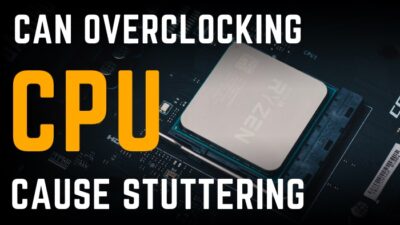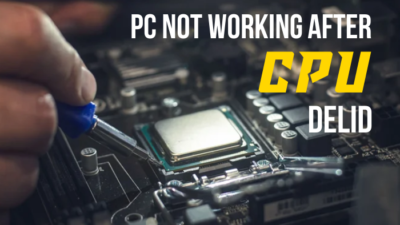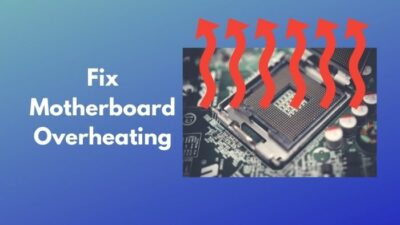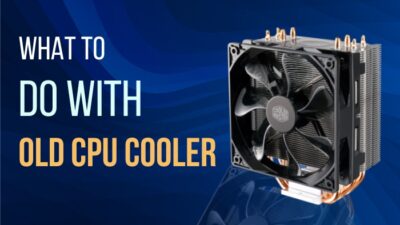It’s phenomenal how a computer consists of thousands of different components and still manages to run without sacrificing performance.
However, the entire system collapses when a component fails to perform its task. Identifying faulty parts is a hassle and can take an eternity.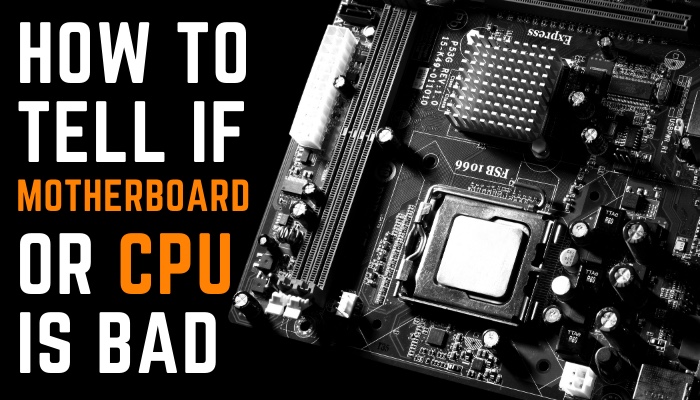
In this article, I have discussed the most straightforward procedures to check if the problem is with the motherboard or CPU.
Let’s get started!
How to Know if Motherboard or CPU is Faulty
You can quickly determine if your motherboard or CPU is faulty using several methods. Check the connections of the components. If the PC turns on, check the CPU. Contrarily, if the computer is not booting, check the motherboard. Also, try to boot with another CPU and motherboard.
If your PC can boot, you should stress test the CPU to determine the processor performance. If the CPU fails to handle the test, you can use a different CPU to check if the processor is bad.
On the other hand, you should also recheck the computer components in order to rule out the main culprit. Consider the following instructions to identify if the issue is the motherboard or CPU.
Here are the methods to identify whether a motherboard or CPU is faulty:
1. Check Connections
Computers consist of thousands of different components. Any damaged part or loose connection can lead to various issues.
Before starting intensive tests, ensure all components are appropriately connected. You should check every cable and component connection manually. Consider the following list to understand what you should check.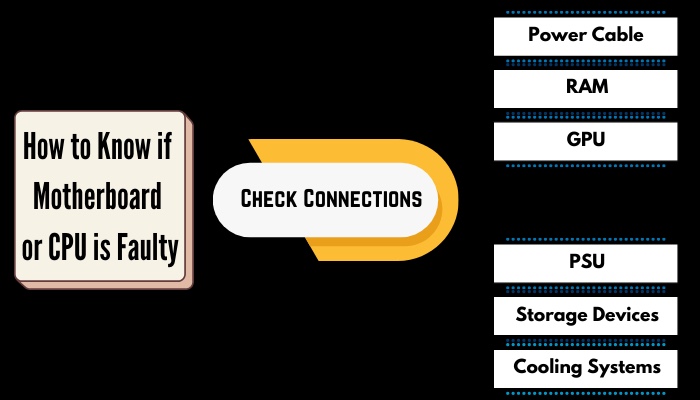
Check the following component connections:
Power Cable
Without a power connection, your PC won’t run. Check for the power cable connection. Ensure the cable is adequately connected to both port and socket.
RAM
Your computer won’t boot without RAM. So, ensure the RAMs are appropriately connected to the motherboard. You will hear a click sound if the RAM is inserted properly.
GPU
The GPU needs a lot of raw power to function. If your GPU requires more than 75 watts to run, you should connect it directly to the PSU with a 6/8 pin connector.
PSU
PSU (Power Supply Unit) provides the required power to the motherboard. Ensure the PSU is functioning and supplying power to the motherboard.
Storage Devices
Storage devices like HDD and SSD must be connected to the motherboard. Check for the storage device connection and ensure they receive power from the PSU.
Cooling Systems
Look for your cooling systems. If the cooling fans don’t receive enough power, they won’t be able to cool down your system, and your system may not boot.
If adjusting any of the above components and cables fixes your issue, the problem is not with your CPU or motherboard. Otherwise, let’s move on to the next step.
2. Test Your CPU
Motherboard damage restricts the computer from turning on. If your computer turns on but fails to provide the best performance, then the issue is in the CPU.
You may often face stuttering from a bad CPU, along with crashes, freezes, and poor performances.
A stress test can force the CPU to perform its full potential. Your CPU usually doesn’t use its peak for basic tasks. You can check the CPU performance under maximum load by doing a stress test. Besides, it will also determine what is causing the trouble.
Now the question is how to stress test the CPU. You can use several third-party applications to accomplish that. However, I suggest using CPU-Z.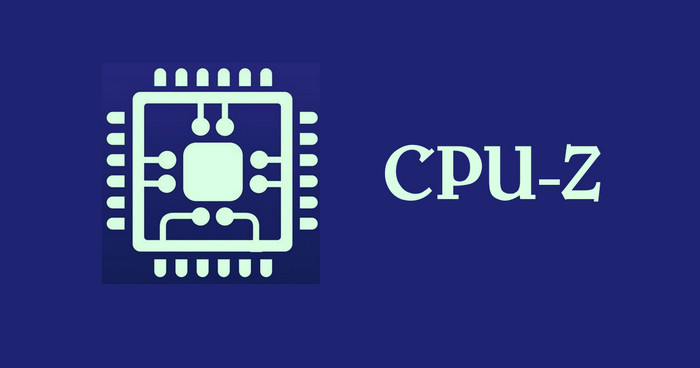
This application may not include fancy features like other stress test applications, but it is suitable for its portability and simplicity.
Along with the stress test application, you will also need a tool to check the CPU temperatures. Use the CoreTemp application for that. This application can continuously show the temperature for each core.
Note: Most graphics driver software can show temperatures. If you have any graphics driver software, you can use it instead of CoreTemp to check the temperatures.
After preparing the applications, it’s time to start the stress test. Go through the following procedures to stress test your CPU.
Consider the following instructions to stress test:
- Launch the CPU-Z application.
- Switch to the Bench tab.
- Click on Stress CPU.
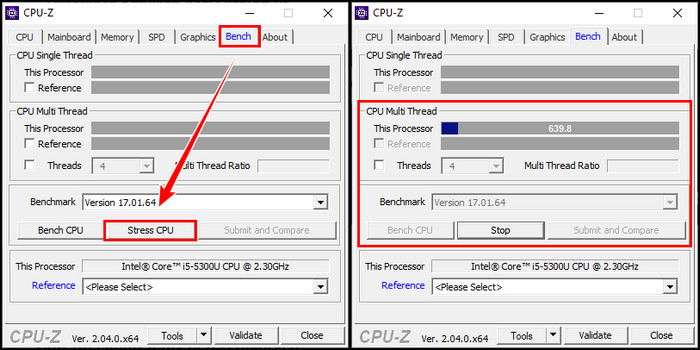
- Open the CoreTemp application.
- Check the CPU temperature.
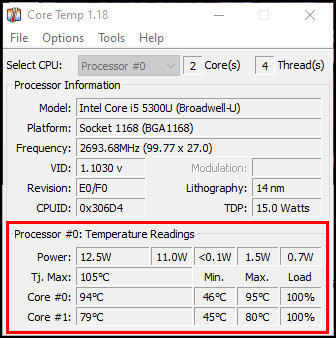
You will notice the CPU temperature is rising slowly. Allow CPU-Z to run the test until the temperature stops increasing. Once the CPU temperature is at its peak, stop the test.
A faulty CPU cannot tolerate the stress test, as this test pushes the CPU to its limit. The problem is not with the CPU if your CPU can handle this test.
However, the main culprit is overheating if the device restarts or crashes during the stress test. So, how to tell if the CPU is overheating? You should analyze the CoreTemp data before the PC restarts.
Quick Note: A CPU may throttle when the temperature rises to 184 °F (84.44 °C). On the contrary, it will shut down when the temperature rises to 212 °F (100 °C) to prevent any damage.
Fortunately, you can quickly resolve the overheating issue with some simple tricks. Consider the following discussion to manage CPU overheating.
Check the subsequent instructions to resolve CPU overheating:
Change Thermal Paste
Removing the old thermal paste and applying new paste can dramatically improve CPU temperature management.
Improve Airflow
Improper airflow is another culprit that overheats the CPU. You must optimize your PC airflow to deal with the heating issue.
Upgrade CPU Cooler
Though the stock CPU cooler is powerful enough, it may lose its productivity over time. In that case, you should upgrade the existing cooler with a high-performance cooler.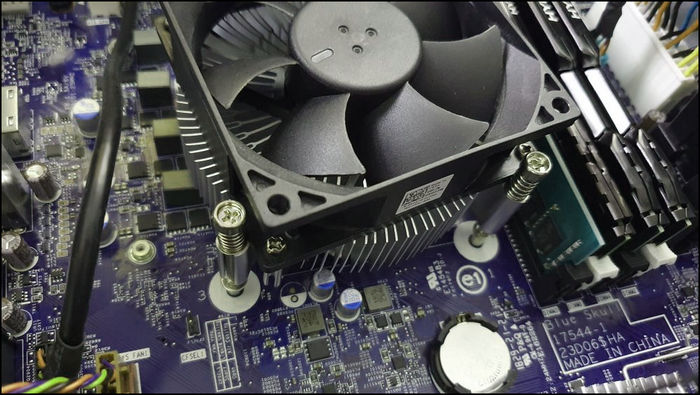
After fixing the overheating issue, you should rerun a stress test to check whether the CPU can take the pressure now. The temperature should be under control this time, and the system temperature should not be over 184 °F (84.44 °C).
However, if the CPU crashes during the test, the CPU is likely faulty, and you should contact a professional to resolve the issue.
3. Test Your Motherboard
When your computer fails to boot, the issue is either with the motherboard or PSU. Even an almost-dead CPU will get you to the boot screen. So, you must check your motherboard if you cannot turn on the PC.
Before doing anything else with your motherboard, you must ensure it receives power from the PSU.
So, how to check if the motherboard is receiving power? There are several ways to check whether the motherboard gets power from the PSU.
Most motherboard models have a built-in speaker that produces beep sounds to indicate the difficulties. Motherboard beep codes help to understand the issue.
Besides, recent models have LED lights. If you see LED lights glowing when turning on the PC, the motherboard is receiving power. Contrarily, the motherboard does not receive enough power if you don’t see the lights glowing.
Don’t have any LED lights on the motherboard? Don’t worry. Looking at the fans, you can still check if the motherboard is receiving power.
Fans are connected to the motherboard and receive power from the motherboard. If the fans don’t spin while turning on the PC, that means they are not getting power.
Quick Reminder: Most of the motherboard problems are power-supply problems in disguise.
In case the motherboard is not receiving power from the power supply, check the cable connections and ensure the PSU is functioning appropriately. If the power supply unit is working perfectly, but the motherboard is not getting power, the problem is with the motherboard.
What if the motherboard is getting power, but the computer is still not booting?
Well, in this scenario, the problem is probably with the RAM sticks or storage devices.
You can determine the exact issue by listening to the beep sounds of your motherboard. Each motherboard has a different beeping system. Search for your motherboard beep codes online and try to find out the reason.
After finding out the causes of the motherboard failure, you can take steps to resolve that particular issue. However, if your motherboard doesn’t receive any power, the motherboard is faulty.
It’s complicated to fix a damaged motherboard. You will need a professional to do it for you. But before sending the motherboard to the repair shop, ensure your PSU, RAM, and storage devices are functioning properly.
4. Use another CPU
If none of the above methods assists you in figuring out the main culprit, it’s time to boot the computer with a different processor.
Collect and install another CPU that is compatible with your motherboard. After installing the new CPU, rerun a stress test by following the previous method. If the new CPU can handle the stress test, the problem is with your old processor.
In that case, you should replace the CPU. Remember, you can quickly fix basic CPU-related problems like over-temperature errors.
CPU pins can often receive damage for several reasons. You can fix bent or deformed processor pins with the help of a professional.
Contrarily, if the situation doesn’t improve even after inserting the new CPU, your original CPU is probably fine, and the problem is with either your CPU socket or motherboard.
5. Use another Motherboard
Using a different motherboard that is compatible with your CPU, you can rule out whether the issue is in the motherboard. For CPU compatibility, check out another post on how to tell if a CPU is compatible with your motherboard.
However, assembling a motherboard is a difficult task. You will need some deep knowledge to do so. You must disassemble the components from the motherboard, and then you need to assemble the parts.
If you never disassemble the motherboard before, it’s easier to look for errors with other CPU components such as RAM, PSU, GPU, and storage devices.
Detach the above components one by one and determine if any of those parts are causing the errors. You may not be able to check the components unless you have a computer with almost identical specifications.
At this point, you should have ruled out the main culprit for the errors you are facing. Remove the faulty parts and replace them with new ones.
If you are still in the dark and fail to find out the faulty part, it’s time to seek professional help.
What are the Signs of a Faulty Motherboard or CPU?
Most symptoms of a damaged motherboard and a bad CPU are almost similar. When the motherboard or CPU is faulty, you may encounter some error codes, beep sounds, system reboots, a Windows BSOD (blue screen of death), or a black screen.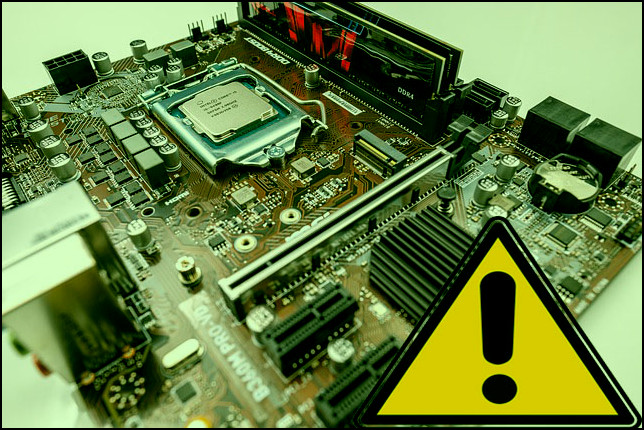
Besides, you should also look for any physical damages, POST (Power On Self Test) errors, boot issues, or lagging. Go through the subsequent list of symptoms to identify a faulty motherboard or CPU.
Here are the following symptoms of a faulty motherboard or CPU:
Physical Damage
Physical damages are easy to detect. Looking at the motherboard or CPU, you can quickly distinguish any physical damage.
CPU pins are vulnerable and get damaged easily. Check the CPU pins carefully for bents. Before that, ensure the CPU socket type. Only PGA CPUs have pins on them.
On the contrary, LGA sockets have pins on the motherboard. Check out another post on the comparison of LGA vs. PGA.
Identify your CPU socket type and check for any possible damages. You should also look for signs of burn on the CPU or motherboard that can occur from a short circuit or overheating.
POST Errors
Your computer performs numerous processes while booting. POST (Power On Self Test) is a system that allows the motherboard to check if all the physical components are functioning properly.
When all the tests pass, your operating system will normally start after booting the device. If the motherboard fails to pass the test, your device won’t start, and you may hear some beeps depending on the damaged part.
Boot Issues
Boot issues are extremely common for a bad CPU or motherboard. If the CPU or motherboard fails to boot, there is an excellent chance of a faulty motherboard or CPU.
If you face a boot issue on your computer, your screen may remain black, though you probably see the fans and storage devices spinning.
Freezing or Lagging
Another common symptom of a bad CPU or motherboard is screen freezing or system lagging.
Your computer may pass the POST test and even boot successfully, but you may still face screen freezing, system lags, and BSOD (Blue Screen of Death) issues for a faulty CPU or motherboard.
Frequently Asked Questions
What are the signs of a dead motherboard?
Motherboards are usually the most long-lasting part of a computer and can last up to 20 years. However, when a motherboard is dead, it won’t show any sign of life, including no lights, no beeps, and no spin of fans.
How do I know if my CPU is damaged?
If your CPU is damaged, your PC won’t boot. You may see the fans and disk drive running, but your computer screen will remain black no matter how hard you try.
How can I tell if I need a new motherboard?
When the motherboard is damaged, your computer may boot, but it will shut down randomly. You may even see blue screens of death if the motherboard is damaged. In that case, you will need a new motherboard.
Final Thoughts
Before anything else, ensure the computer components are connected adequately to the motherboard. If all the connections are alright, then check whether your PC boots.
You should stress test the CPU to see if it turns on. Keep your eyes open during the test. If the CPU can’t handle the test, improve airflow and reapply the thermal paste.
Contrarily, if the PC doesn’t boot, ensure the motherboard receives power from the PSU. You can also try using a different CPU or motherboard to detect the dilemma.

